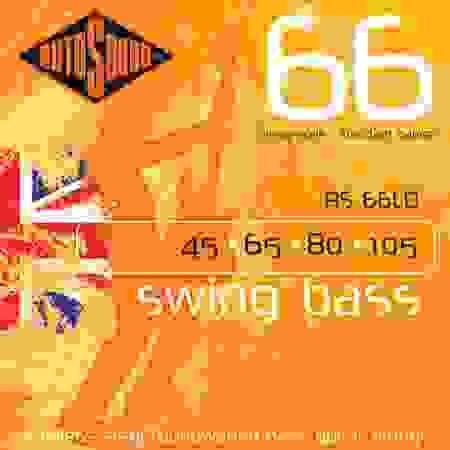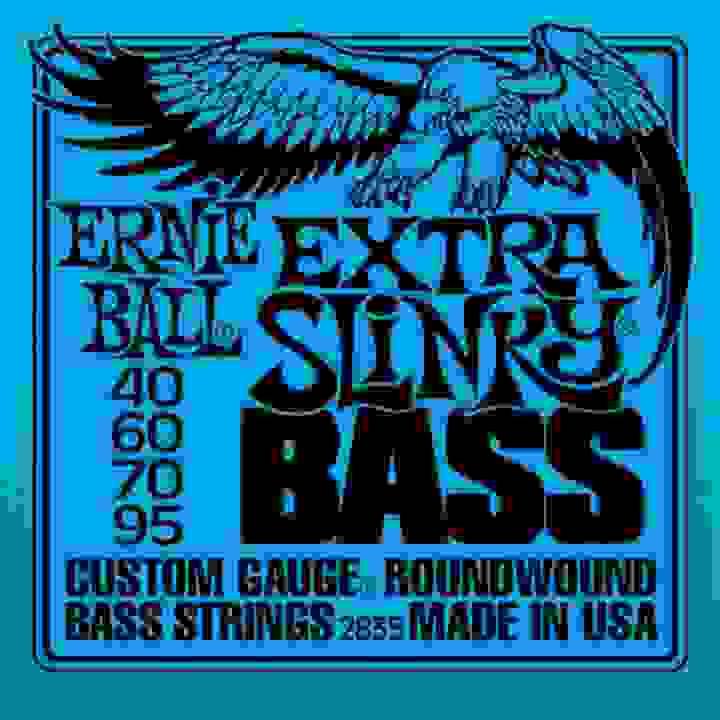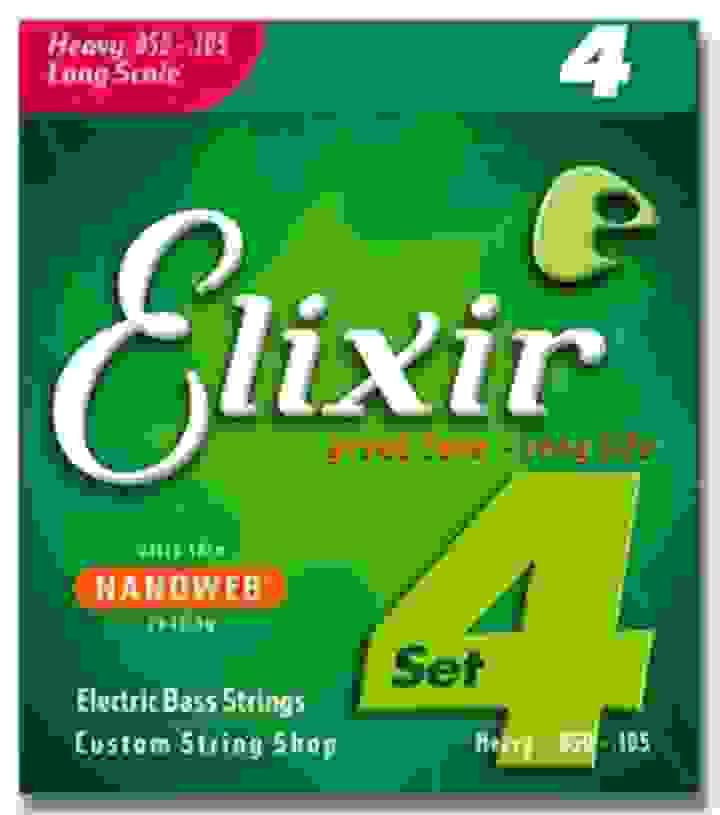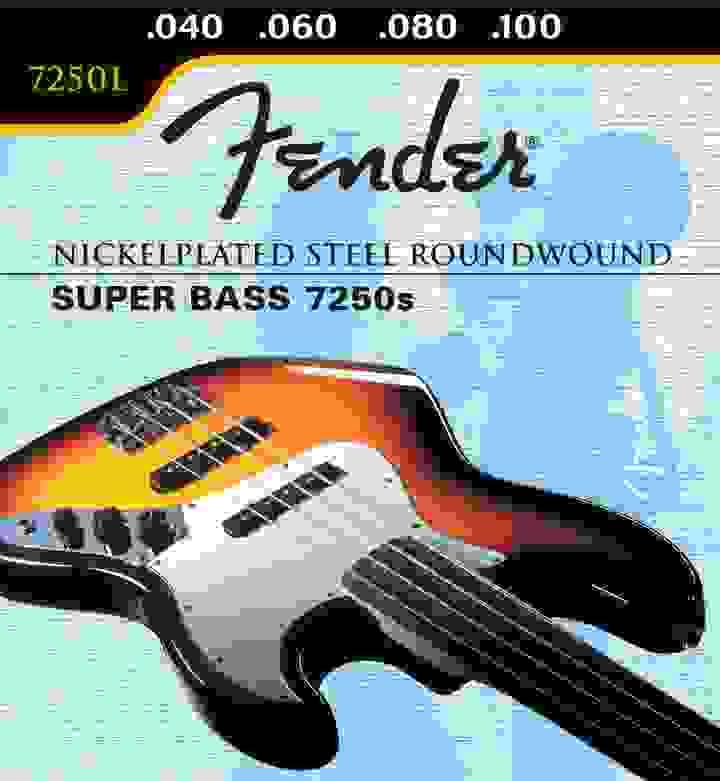

Bass Strings
"Behind every good band is a great bass player and behind every great bass player are great bass strings" - J.Dawson
About Me
I started playing bass at 12 years old, I'm now 40. I first started playing bass because my dad taught me, also my elder brother was learning guitar and needed to practise so I was roped in to help him.
28 years later and I'm still playing in bands with my bro.
I love playing bass. I'm a natural player, I have rythmn and an ear for what ties in with the beat, you can't beat a good jam!
Anyway, I wanted to write something about my passion. What better place to start than on the fantastic Strikingly platform with it's easy to use and fantastic web builder.
Bass Strings 101
Let's Start With the Basics

Bass String Packets
When you buy your strings first of all know that they come in individual packets that are labelled individually in their gauge (and not as E,A,D,G) so .10 .13 .17 and so on. You will also see their position on the bass too, i.e. 1st, 2nd, 3rd, 4th

4 or 5 Strings (or more)
I'll admit I still play my 4 string bass, I've tried a 5 string and considering I mostly play rock and metal I probably should be using the lower B but I played the 4 string for such a long time that I found it too weird to make the switch so in the end I didn't. Am I the only one? I don't really care but it would be interesting to find out haha.
The Top Brands
Which Bass Strings I recommend

Rotosound Bass Strings
A small tagline
Rotosound - I used these strings in the early days, they are very bright sounding for a long time.

Dunlop Bass Strings
A small tagline
Dunlop - I've only recently tried these but they are a decent brand and do sound very bright. Great for slap bass.

Ernie Ball Bass Strings
A small tagline
Ernie Ball - the staple diet I have stuck to for years despite trying other brands. Can't go wrong with a set of Ernie Balls.

Elixir Bass Strings
A small tagline
Elixir - I've only ever bought 1 set of these and it was a while ago, I'll be buying more soon so check back for a fuller review.

Fender Bass Strings
A small tagline
Fender - my dad swears by these. I've had a few sets myself in the medium gauge and they were pretty good. See below for a general overview.

Rotosound Bass Strings
Rotosound bass strings are the first of the round-wound stainless steel bass strings produced by famous manufacturing company, Rotosound. Many notable players such as Michael Amott (Arch Enemy), Zeta Bosio (Soda Stereo), Jean-Jacques Burnel (The Stranglers), Cliff Burton (Metallica) are users of the bass strings of this Rotosound brand.
Its strings are available in different gauges and scale lengths. One set of Rotosound Bass Strings includes 4 bass strings. The gauge of the strings is balanced.
From high to low, the measurements go from .045, .065, .080 and 0.105. It is a round wound stainless string with no coating. One set costs roughly 19$.
Unique Features
The steel that is used to manufacture RotosoundBass Stringsare unique. The strings are combined with a complicated and extensive manufacturing process. If you are looking for bass strings that will give you responsive feel and sustained tone that will add the signature flavor in your playing, then you might be searching for Rotosound Swing Bass round wound stainless steel strings.
The strings are made of stainless steel. So, they are a bit more rough and coarse than the nickel plated strings but do not cause discomfort to affect your natural playing. String tension is well- balanced and allows for a variety of playing styles such as slap, finger picking, flamenco etc. The strings produce awesome low mid growl that progressive rock bass players will dearly appreciate.
Different String Grades
In its product line, Rotosound has the following grades of strings:
Solo Bass 55
It is a steel roundwound string with hex core. These have brightness and clarity. It has pressure wound feature to reduce finger noise/finger wear.
Swing Bass 66
Swing Bass 66 are available in both stainless steel and nickel varieties. Steel ones are the brighter of the two. Both have hex core. It is a very popular grade which is used by John Entwistle, Geddy Lee and many others.
Rotobass
These are nickel roundwound strings with a hex core. It is comparatively less expensive than the other grades.
Jazz Bazz 77
Jazz Bazz 77 are flatwound strings with a hex core. These strings have been featured on famous records that include Dark Side of the Moon (Pink Floyd),A Night at the Opera (Queen), Live and Dangerous (Thin Lizzy).
Tonality
They give you the real punchy and versatile tone with a bit of twang. Yet, they give you the thick, heavy tone that you look for jazz and rock. The strings sound like a piano whenever you use enough treble. You can switch from clear sound to deep bass by switching pickups. However, you will need to have the amp settings correctly to get the best out of the strings. One objection regarding the strings is that the sound quality does not last for too long.
These strings are not the best for drop tuning as they lose tone significantly. These will work perfectly fine if you play in standard tuning. As the strings get older, you will not quite the sound when they are in new condition. Therefore, you will have to take care of the strings to maintain the sound quality.

Ernie Ball Bass Strings
Ernie Ball Strings are the leader in acoustic and electric guitar strings. People from around the globe have come to enjoy these strings. With so many varieties to pick from, many people from pros down to beginners have no problem finding ones to fit their needs. These strings have been manufactured for as long as the electric guitar has. With many different types and gauges to pick from there is no question why so many people choose them.
Ernie Ball is a well respected bass and guitar string manufacturer that has been a leader in the business since the 1960s, and is in fact named after the founder of the company. Many world class bassists including Tony Levin and Dave LaRue endorse their popular bass strings. The terminology used in the branding of Ernie Ball's bass strings can be difficult to decipher, and this article is an attempt to clear things up, as well as provide a basic overview / review of the different strings this excellent company has to offer.Ernie Ball essentially has three categories of bass strings: Slinky, Slinky Stainless Steel, and "Electric Bass Strings." Slinky are roundwound strings made from nickel with a tempered core. Roundwounds are the brighter, more metallic sounding strings where you can feel the metal ridges with your hands. Nickel, which the Slinky's are made of, is a bit warmer in tone and softer on the hands than stainless steel, which of course is what the Slinky Stainless Steels are made of. The Steels also have a round core, which adds further to the brightness and fullness of the string. The "Electric Bass Strings" are flatwound, which feel very smooth and have a much darker, thumpier tone, contributed to even more by their hex core.
What can be confusing when selecting Ernie Ball bass strings are the variety of names you will see like regular, hybrid, extra, super, and power in front of the Slinky and Slinky Stainless Steel strings. Fear not, for these terms simply refer to the gauge, how thick the strings are- otherwise, they are the same. Here is the order from thinnest to thickest: Extra, Super, Hybrid, Regular, Power. For the flatwound "Electric Bass Strings," gauge is referred to by "group" one through four, four being the thinnest and one being the thickest.Users report that the Slinky Stainless Steels are particularly bright strings that are rough on the fingers if you do not have a good callous, even within the realm of stainless steel. They lose the intensity of their brightness rather quickly, which is a blessing to some and a curse to others.
The "regular," nickel Slinky strings also mellow out rather quickly compared to how they sound out of the package, but many users love the result. I personally have had good results with this string. They are also very well priced, and are fairly smooth by roundwound standards. These strings are not recommended for those who play particularly aggressive slap / pop styles.Ernie Ball's "Electric Bass" flatwound strings are excellent for those who like a deep, thumpy, old school sound. They are also well priced for flatwounds, and the variety of gauges allow for many options in tension. For the most part, these strings sit in the middle from being too tense or too floppy.

Dunlop Bass Strings
Even the most formative bass player is going to develop the itch. The itch for a big, rich bass sound that can be replicated through a quality amp. His or her sound eats up so much space in the music that there grows a real need for a quality instrument. Add budget concerns, however, and finding a bass that's going to cut it becomes more challenging.
A Dunlop bass guitar is going to scratch that itch and then some. They bring all the sauciness of a standard Soundgear Bass but with a less-demanding price tag. They're also subject to the same rigorous engineering standards and inspection as more expensive Ibanez basses. Every burgeoning player outgrows their first instrument. If your cut-my-teeth 4-string has become beneath you, the Dunlop is one you can afford. More importantly, it'll accompany you nicely on your way to becoming an intermediate player.
Dunlop bass strings have a bright, clear, often metallic sound with longer sustain. They are the most commonly used today, capable of producing
a wide range of tones that are distinctive to many styles of music.Dunlop bass strings are critical to the clear, percussive effect of slapping and popping in players like Wooten, Marcus Miller, Larry Graham, etc. Note that Dunlop bass strings *can* be tougher on frets and particularly on fretless, due to the textured metallic wrapping.
Dunlop bass strings are typically made of either stainless steel or nickel. Stainless steel are the brightest, clearest strings, which also produce the most amount of "finger noise" and buzzing sound against the frets. This is desirable in many styles.
Nickel feels a little softer on the hands and has less of the metallic high end treble in the sound than steel strings. This also equates to less finger noise coming through and a smoother, mellower sound than steel while still falling on the bright/clear end of the spectrum.
Dunlop bass strings are very smooth, with a much darker, muted or "dead" sound, and generally more low-end "thump."
Dunlop bass strings are a nice compromise between round and flat. Dunlop bass strings are partially ground-down and smoothed out, to providing a middle ground between brightness vs. deadness in sound, and metallic roughness vs. smoothness in feel.
Much less common these days than flat or roundwound, a few companies including Fender and Rotosound make a "tapewound" string out of Nylon- they are darker, warmer and softer than Dunlop bass strings. If you have ever seen black strings on a bass, that is Nylon.
The Dunlop bass strings features two standard coil pickups and a P-bass split style neck pickup. Both are designated as "high output" and the bass does have sufficient but not excellent versatility. Between the two there's a nice "standard" tone with some flexibility. The rosewood neck sports medium jumbo frets for player friendliness. The DUNLOP BASS STRINGS's body is cut more aggressively to allow easier access to the higher frets. The bridge has a more forgiving nature to it as well to accommodate newer players.
Where this bass guitar makes a move is with it's ability to handle and clearly reproduce low-end power. Dunlop bass strings bass guitars boast the PHAT II active bass boost system on all models. It makes them particularly appealing to rock and metal players as you can dip WAY down without concern. Another note worthy of mention is that the DUNLOP BASS STRINGS basses are the only entry-level priced line that carries 5 and 6 string models.
Moving your way up to a better quality and more responsive instrument is enjoyable. The Dunlop bass strings brings the same sleekness, comfort, tone and playability as the SDGR bass but won't ask as much of your wallet. They're worthy of your sitting down with one, that's for sure.

Elixir Bass Strings
In general, strings have a big impact on a guitar’s sound and playability. This part of the instrument is the soul of the sound that comes out of a guitar. Their characteristics can be defined by their gauge; lighter gauge strings are usually easier to play, heavier ones produce more volume and are preferred for low tuning. The used materials and the manufacturer’s different technologies also play an important role. For beginners, this area can be really confusing as there is an excessive range of options available, and it is not easy to make the right choice without experience.
Elixir is a pioneering manufacturer of the guitar industry, and has been selling high quality products since 1995. Over a decade ago, the company came up with specially coated nickel and steel strings that are covered with an invisible, ultra-thin, space age polymer tube. The thin teflon (or polytetrafluoroethylene) layer is the heart of the so-called NANOWEB technology, which was tested by 5,000 musicians before production. This is the first major innovation in instrument strings in a very long time, and leads to better tone and significantly extended life among several other benefits. Why is Elixir better than the average? While other manufacturers coat only the surface of the windings, leaving the space between the windings exposed to dirt and oil, Elixir covers between the windings as well, leaving no empty space at all.
Elixir Strings will bring out the best in your instrument. While it feels smooth, easy to play, and the sounds are well balanced, rounded and full, with expressive tones, it reduces unwanted string noise too. The thin, softer layer will also prevent you from cutting your fingers while playing. Due to the advanced technology that prevents corrosion, these strings usually last 3 to 5 times longer than the average. NANOWEB products are a bit pricy, but there is a cheaper product on the market to consider: while it also has the previously mentioned benefits, Polyweb, - which uses the same technology -, is a great choice with its original, warm, “played-in” tone, and costs significantly less.
On the other hand, many professional and hobby users complain about the coated strings technology: they say that the layer alters the sound. It affects the tuning of the guitar and hides the charm and the best sounds of the instrument, which does not sound traditional and original. Some users also say that the layer is not sticking enough which causes it to be torn after only a few months of use. This quality issue usually affects the heavy users who spend hours playing on their guitars on a daily basis and give no time to corrosion to appear making the special layer pointless.
Compared to the market average NANOWEB strings are expensive. Both NANOWEB and the significantly more affordable Polyweb represent a new, groundbreaking technology that definitely has a future in the music industry. For those, who want their instrument to last, prefer high-quality equipment and like smooth and low-end sounds, Elixir can be a wise choice.

Fender Bass Strings
In the late 1950’s, the Fender Precision Bass became the definitive electric bass in modern music. It was such a popular and dominant brand that musicians that used an electric bass called it the Fender bass, regardless of what actual make it was. This was a brand that, since its inception, completely changed the music industry forever.
Fender introduced Precision Bass in 1951. This was designed with a slab ash body and one piece maple neck as well as a single coil pickup in the middle position. The strings go through the back of the body and the bridge is a two piece pressed fiber design. The headstock looks like an initial Telecaster that was designed in earlier years. Back then, the only color options were blonde with a black pickguard. Also, a finger-rest is mounted below the G string with just one screw.
By 1954, Fender added body contours to the upper arm bout and back. This was very similar to the Stratocaster guitar which is of today’s age. The bridge was amended to steel and the body was available in two-toned color with a white pickguard.
By the 1960’s the slab rosewood board was replaced with a radius laminated rosewood version. Faux pearl dots replaced clay position markers and the pickguard material was changed to vinyl.
In the 1980’s Fender started manufacturing accurate bass strong designs and finishes, according to original quality and improved sound.
Setting up Fender Bass Strings
One of the most imperative things you can do for your Fender Bass is general and proper setup. Unfortunately, this is overseen by many bassists but remains one of the most important steps of being a Fender Bass owner. It allows you to play better with a more defined sound.
Bridge adjustment is a simple and effective way of maintaining the correct string height. Some bassists prefer the lower action which helps with playing faster, whilst others prefer it higher as they feel they can achieve a stronger tone without fret buzz in this way.
Adjusting the height of each strong saddle can be done with either an Allen or slotted screws. Often, bassists have strings set to varied heights which allow them to curve the fingerboard or the thickness of the string. Other players prefer the strings to all be on one height, and some niche players like to even adjust strings strictly by ear.
Fender offers a variety of bass strings which are available in long, medium and short scales. Due to the amount of tension in the neck, it is advisable to replace and tune each new string before removing the next string. After the entire set of strings are replaced, stretch your strings by holding them at the first fret and hooking your fingers under each string, one at a time. Then tug them lightly and move your hand from the bridge to the neck. Re-tune and repeat several times for enhanced quality.
These adjustments should be done on a regular basis to achieve enhanced performance and better sound with fewer problems in the long run.
More About Bass Strings
Strings are one of the most important parts of your bass guitar. The quality, material and type will always play key roles in giving you a unique sound. Learn more about bass guitar strings and experiment with them.
Since bass guitar strings are a much heavier gauge than regular guitar strings, the bass players is not likely to ever break a bass guitar string.
However, this is not true with the tenor string, which is the smallest string located on the bass. For this reason, it is extremely important to take proper care of your bass strings.It is highly recommended that you change your bass strings every couple of months whether you feel they need it or not. Oftentimes, your strings will get not only dirty but will get a build up of gunk on them that will cling to them. This build up will cause your sound to be down-graded.
Never put only one new string on and leave a four month old string on. When you have different age strings on your bass guitar, then the sound that is produced from your bass is not going to be the best it can be.
In fact, it is going to be quite contorted. The life of your bass guitar strings can be vastly extended if you wipe down your strings each time you use your bass.
Another thing that needs to be discussed is never leaving your bass outside or stored inside near a window over any long period of time.
The reason for this is that over time or a long period of time the cold or the heat can cause your bass to become ruined. It can also cause your bass guitar strings to become way out of tune.
When times permits the bass strings is with a soft, cotton cloth and a couple drops of rubbing alcohol, which can be purchased at your local drug store. For a few seconds, let the rubbing alcohol soak into the cotton cloth before beginning to clean the strings on your bass.
The next step is to position the moist part of the cotton cloth between your index finger and your thumb. Continue by placing the cotton cloth at the beginning of a string and pinching the string with your index finger and your thumb against the moist part of the cotton cloth. Now all you have to do is rub up and down the length of the string.
Continue this process on all the other strings until they are all clean. Your bass will now produce a much brighter and clearer sound. Remember, do not get the alcohol on any part of the wood on your bass since it will dry out the wood. Continue enjoying your bass guitar and remember to care for your bass guitar strings.
Anatomy of you bass guitar string
Your string is composed of two different types of wires-the core and winding one. The core string is a thick wire which runs along the fingerboard from one end to the other. The winding string wraps around the core string, covering the length of the wire. If you are going to look closely to your bass guitar string, you will see small grooves running along the wire- that's the winding string.
Materials
Bass strings are usually made from nickel or stainless steel. A stainless steel string has more sound with it - much like a warping kind of tone. It is a favorite among the rock bassists due to its "grainy" sound and better sustain. It is a high-end string which caters to aggressive style of play. Nickel strings on the other hand can be mellow when used for soft music but you can also expect a respectable driven sound when you play it on a rock or metal piece. Flea of Red Hot Chili Peppers loves to play with nickel-plated strings. Nickel and stainless steel are generally the material for round-wound strings. Some manufacturers also produce strings made from Nylon for acoustic bass guitars.
Round-wound and Flat-wound
With round-wound, the winding strings hugs around the core-forming a cylindrical shape. The ridges along the string help the tapping and popping sounds from famous bassists like Larry Graham and Victor Wooten. Generally, most players right now are using round-wound because of its crystal clear sound. As the name suggests, flat-wound strings have flat and smooth windings. It has a more old-school feel from it because of its thumping sound. It has shorter sustain that is noticeable on reggae and Motown music.
Gauges
Simply put, gauge is the thickness and the diameter of your string measured in inches. A standard E string has a.105" gauge and a standard G-string measures.45" in diameter. If you want a lower sound much like those heard in Motown records, go for a higher gauge. If you are playing funky tunes, go for the lighter gauge for easy popping and slapping.
As you can see, it is not just about the material of your bass guitar's body and fingerboard. The form and material of your string can also make a difference on your sound. Try to research more about your favorite bassists and discover what type of string they are using.
P.s. I've been looking at lot recently at copy trading recently and I can highly recommend the following links:
https://tradewise.community/is-copy-trading-safe/
https://tradewise.community/how-to-copy-traders/
https://tradewise.community/best-ways-to-start-trading-stocks-online/
Copyright © 2002 - 2016 Eckhart Consulting. All rights reserved.












